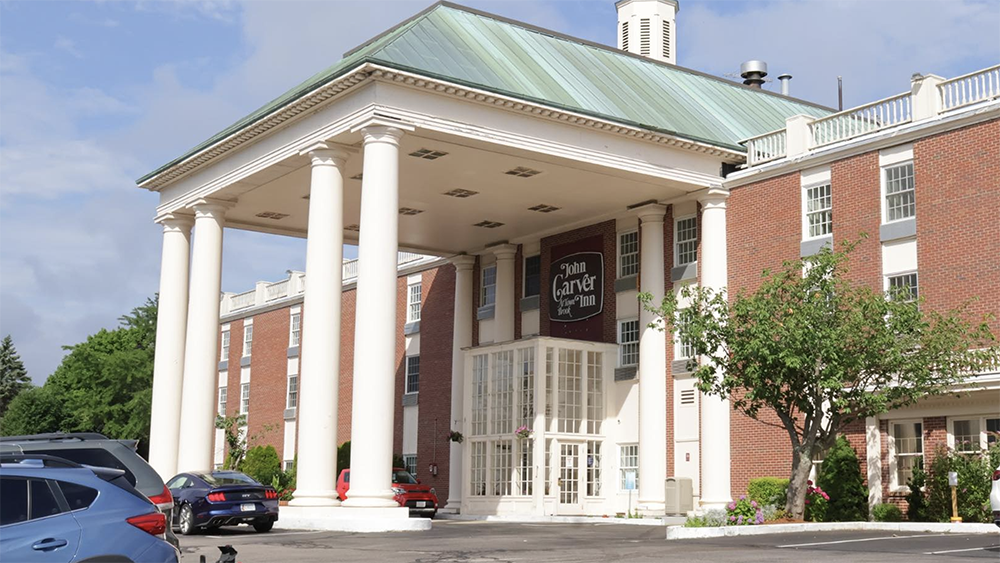News: Owners Developers & Managers
Posted: July 3, 2014
Cracksealing & tennis court frequently asked questions:
Cracksealing FAQ:
Does hot applied crack filler come in any color other than black?
Many people do not like the way black crack filler stands out on a gray oxidized parking lot. It now comes in gray along with other colors for your Tennis Courts like green, red, and blue as well.
How should the cracks be prepared prior to the crack sealant being installed?
Grass & weeds should be removed from the cracks. If there is a lot of growth in the cracks; it should be killed first so no live roots will be left behind. This could lead to grass growing up through your new crack filler. Even if the grass is burned its roots need to be taken out of the cracks. Cleaning of the sidewalks of the cracks should be done using a minimum of 125 CFM 90 PSI air pressure. Leaf blowers only get the tops of the cracks and not the sidewalks.
How should hot applied crack sealant be applied?
Using a pressure applicator. Routing the cracks and using a gravity feed pouring pot or pressure applicator. Using squeegees tend not to fill the cracks completely.
How are you charged for cracksealing?
NESCO prefers to tell you how many linear feet of cracks there are and a lump sum price to seal all of the cracks. Others will charge you by the linear foot, gallons of crack filler or pallets of crack filler. This leaves the customer wide open to what the actual cost will be to finish the job.
Are some cracks too wide for hot applied crack sealants?
The standard hot applied crack fillers effectiveness is shaky at around 2 ½ inches, but there now are mastics such as Poly Patch which is designed for very wide cracks.
What do you do if there is a wide crack between concrete and asphalt?
Mastics such as Poly Patch work excellent in these situations.
Tennis Court FAQ:
What is the size of a tennis court?
The actual court area is 78' x36'. The fenced in area is typically 120'x60'. Sometimes they are made smaller to fit into the area they are going.
Does it matter what direction the court is going?
North/South is the best if possible since the sun moves East to West.
What is the slope of a tennis court?
All weather courts should be sloped in one (1) plane side to side, end to end or corner to corner. At a minimum of 1" in 10' and a maximum of 1%.
What size should be the height of my fence?
The recommended height is 10' or 12'.
What should be the height of my net?
The height of the center of a tennis court is 3' 2".
How many coats of acrylic colorcoating should a newly paved tennis court have applied?
The basic system is three coats. One of acrylic resurfacer, and two coats of the finish. An extra coat of resurfacer (total of four coats will make the surface look fantastic).
My court has been colorcoated before, how many coats should now be applied?
Unless the coating shows very little wear NESCO recommends three coats. If the court is having repairs work, a minimum of three coats is needed. If the coating is not worn two coats maybe sufficient.
My court gets dirty what can I do?
It is alright to wash your tennis court pressure washing is allowed but do it gently or you will leave marks. It is better to wash it a couple of times than to try and wash it all at once with the power on full. NESCO recommends you trim your trees back so mold does not grow in the shaded areas.
After my court has been paved how long so I need to wait before it is colorcoated? You need to wait for the oils to come off the surface. Most manufacturers recommend 14 days.
What causes my net posts to heave? Typically it is the moisture in the ground and the frost pushing the foundation up. That is why a bell shaped net post foundation is best. It is harder for the frost to push the foundation up.
What types of crack fillers are available for my tennis court?
A)The membrane systems such as the Riteway and Armor are the best systems to use. You will get a number of years out of this repair provided the court does not have moisture issues.
B) Materials mixed with concrete and acrylic crack fillers are very inexpensive, not very flexible. They look great at first and tend to fail during the first or second winter.
C) Hot rubberized asphalt will keep the crack sealed shut because it is very flexible; but is very hard to be applied flush with the court and the colorcoating tends to wear off of it because of its flexibility.
7. How are the colorcoating materials applied? The court must be thoroughly cleaned first. Pressure washing in many times is needed. Then the coatings are applied by squeegee.
8. How are the lines applied? The lines are laid out, two pieces of masking tape are put down 2" apart and then the lines are hand painted by brush. Spraying the lines leave a fussy edge.
9. Should I take my net down during the winter? Yes, we recommend you take it down if you are not using the court. If you are using the court loosen the tension leaving the net up. The tension will help the frost heave the net post foundation out of the ground.
10. Will a truck have to be able to reach my court? In most cases everything needed for your court repairs can be carried to and from your court by the crews. If paving is needed access for equipment will be necessary.
11.What is the average life of the colorcoating? Everyone's court is a little different. The amount of play a court gets is a major factor and how much the appearance matters. Most people redo their courts between every 5 and 8 years. If the court has cracks we recommend having it looked at every 2-3 years to keep up with maintenance.
Craig Swain is the president of New England Sealcoating Co., Inc., Hingham, Mass.
MORE FROM Owners Developers & Managers
Mount Vernon Co. acquires John Carver Inn & Spa in Plymouth, MA
Plymouth, MA The Mount Vernon Company (MVC), a Boston-based real estate and hospitality investment firm, has completed the acquisition of the John Carver Inn & Spa, an 80-room property.

Quick Hits
Columns and Thought Leadership

IREM President’s Message: Fostering community connections during the holiday season
The holidays are again taking center stage, and with them comes an opportunity for multifamily communities to connect with the businesses and organizations in their cities and towns, fostering a sense of unity and generosity during this giving season

Recently passed legislation creates opportunities to meet CT’s changing energy needs - by Klein and Feinn
For decades, New England has had a summer-peaking power system, where the greatest energy use occurs on the hottest and most humid days, due to widespread use of air conditioning. But by the mid-2030s, electrification of the heating sector likely will result in a winter peak that’s higher than the summer peak.

Selecting the right façade installation firm - by Steven Powell
As the owner of a major new property being developed, or an existing large building preparing for major renovation, you want your design and construction team to have the right experience, capabilities, and expertise to match the project demands. A critical member of this team will be the façade installation specialty firm, since the quality of this installation will impact

.png)





.png)
